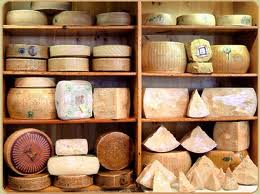Iltay: House No 37 in Village Olmeneta, near Cremona area of Italy, quintessentially represents the Sikh contribution of keeping the Italian formaggio (cheese) and dairy industry alive. Not only this, its habitants Onkar Singh, Balveer Kaur and their family typify the struggle of Punjabis, particularly Sikhs, who landed in large numbers in Italy in the nineteen hundred and eighties during insurgency in Punjab and created a mini Punjab on Italian soil.
“My father is one of the earliest Sikh settlers in this area; he started working on the dairy farms in the early 1990s,” says 22-year-old Jaspinder Kaur, as we walk from the Olmeneta train station to her house, where I would spend two days to experience firsthand the Sikh stamp on the Italian dairy industry. “He came here as a young man, leaving his village, Pandori, in Hoshiarpur district, in search for a better life,” adds Jaspinder as she ushers me inside the house.
As the story goes, the Italian youth after getting educated did not want to pursue low-skilled jobs of milking and grazing the cows at dairy farms. Enter: Sikhs in search of greener pastures, as Punjab boiled, back in the 1980s and early 1990s. Taking full advantage of the asylum benefits offered by Italy, thousands of low-skilled workers from Punjab landed in this European haven, ready to do any job, as long as they could get their foothold in Italy. Well, so strong is the entrenchment that ask any Punjabi sitting in the local train where he works, catch me if he doesn’t say ‘Stalla’, meaning dairy farm. Believe me, it’s the only patch of land in the world where Italian is spoken in a Punjabi accent and cows understand only Punjabi. And of course, the maa di, bhen di version of it!
“I don’t know what the Sikhs tell my cows, but they (cows) behave very well,” laughs Alfredo Villa, a dairy farm owner, who has employed only Sikhs for the past two decades. “Jokes apart, Sikhs are one of the most honest and hardworking people I have met in my life,” he says. Italy is full of immigrant labour from all over the globe, but nothing beats the Sikhs. Other than human qualities, they are skilled to do jobs in agriculture and dairying and don’t take much vacation, something very crucial to the dairying industry, adds Alfredo.
Onkar Singh, who received me with open arms, narrates his journey as we eat dinner at his house. Pizzas roll out from the oven like chapattis and I gorge on them greedily, knowing fully well that this is not a household that believes in peg and tandoori chicken. A man of very soft demeanour, Onkar Singh says he had to do many temporary jobs, including working as a driver in a circus, before he could find a stable job here in the Lombardy region, which is known for its agriculture, dairying, beef and piggery.
“I finally found a job in a dairy farm in the early 1990s and I worked with the same owner for over a decade, living on the Stalla itself with my family,” says Onkar, whose job profile included milking of cows at 12.30 am, feeding them and milking them again in the evening — a routine which he still follows, except that he lives in his own house. Onkar Singh also drove me to his work place and showed me the dairy farm operations and the manner in which the cows were milked.
Next morning Jaspinder makes an effort and takes me to visit one of the largest cheese factories in the region. The factory, Latteria Sorseina (meaning dairy or store selling milk of Sorsenia region) produces cheeses such as the grano padano, parmigiana, reggiani, provolone and mozzarella. Jaspinder’s meticulous planning assures that we are received by the top management of the company, which lauds the contribution of the Sikhs to the dairy industry. “We certainly owe it to the Sikhs for keeping the business of cheese alive,” says the director general, Aldo Cavagnoli. The might of the Sikh contribution can be gauged from the fact that Latteria Sorsenia, which processes milk of approximately 43,000 cows from about 200 farms, has a mind boggling 89% of the immigrant work force and 54% of the total labour at these dairy farms comprises of Indians, majority being Sikhs.
On our return from the cheese factory, we head for other dairy farms, including the largest one in the Cremona area with 750 cows. Four Sikh families tend to this dairy farm. They are all related, a hallmark of the emigration pattern of the Sikhs in Italy. The oldest member, Dilbagh Singh of village Jandiran in Jalandhar district, has been working on the dairy since 1997. “It’s been a hard life,” he claims as he herds a bunch into the milking chambers.
“When I came here in 1991, I saw no future for myself in Punjab,” he adds. But today, the circumstances are different. If the youth put in this kind of labour back home in Punjab, I’m sure they can progress much more and contribute to the state’s economy,” he says. And as we head home, a resolute Onkar Singh tells me that his children will not do these low-skilled jobs. His daughter, Jaspinder, who has completed her graduation in international trade and now pursuing languages, is seeking newer opportunities. Gurminder, his 18-year-old son, besides his craze for driving guests (he just got his drivers licence), is pursuing a course in architecture. Salute to the spirit of the Sikhs, who even when in Rome, do it the Punjab way.
Source: SikhNet.Com
 Sikh Sangat News Celebrating Sikh culture and sharing Sikh voices
Sikh Sangat News Celebrating Sikh culture and sharing Sikh voices

